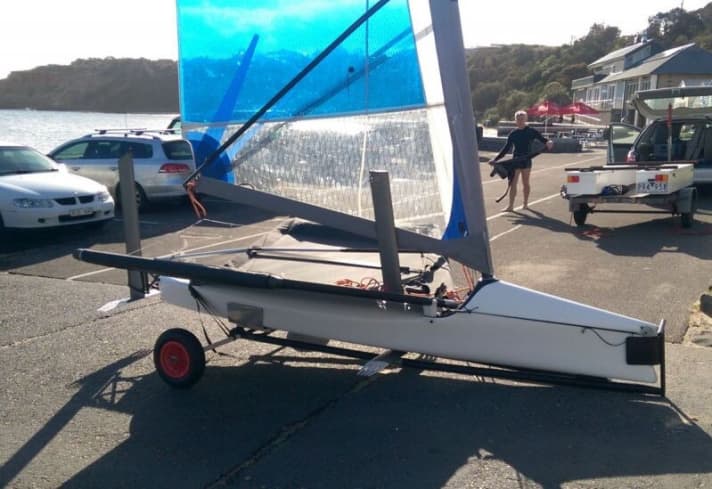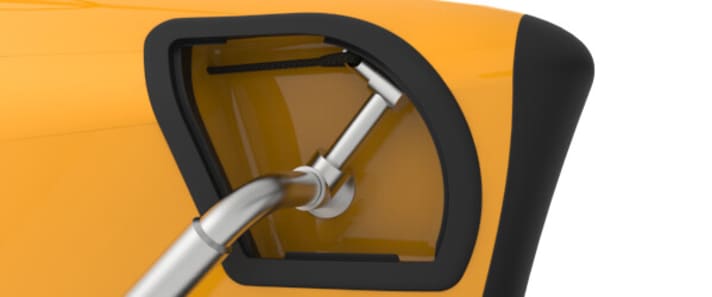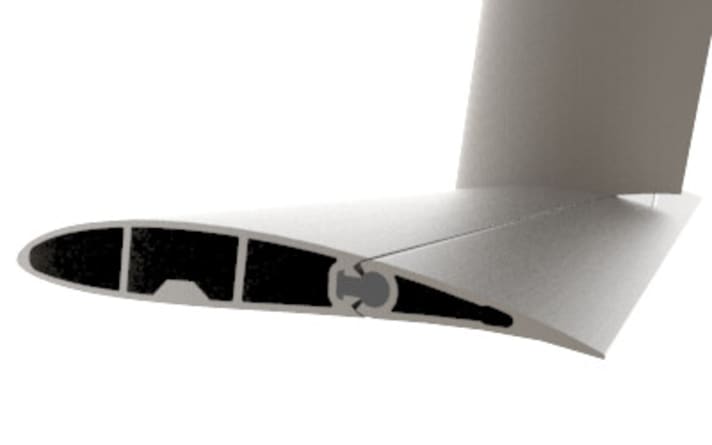

It sounds like the ultimate sailing device for overcoming a midlife crisis: on the Foil Week on Lake Garda designer Andrew McDougall presented the long-awaited new Waszp design this morning. It is a tamer version of the Moth, a design class in which the Mach 2 designed by McDougall dominates. With a recent speed of over 30 knots, the Moth, especially the Mach 2 design, is currently probably the fastest single-handed sailing vessel in the world and is also the training tool of some America's Cup helmsmen. However, it is not easy to master and is also quite expensive at around 20,000 euros.
McDogall now wants to offer an alternative to this with the Waszp. Waszp is a play on words from the English Wasp, a moth with a sting. The Z was added by designer Mc Dougall because "zzzzz sounds fast in English". The racer is expected to cost only around 12,000 euros, which is mainly due to its intended status as a standardised class. This means that some parts can be standardised and simplified.


Standard aluminium profiles are used for the daggerboards and foils and not the very elaborate carbon wings of the Motte. The ends of the T-foils, which are shaped like bird wings, are interesting.

The mast is free-standing, which means that the frequent injuries to the shrouds in the event of falls can no longer occur.

The outrigger wings can be adjusted in three stages: horizontally for beginners to give more stability, diagonally upwards for advanced sailors to realise the important heeling to windward, and completely folded upwards so that the boat requires very little floor space on land.

The rudder and centreboard are also retractable, which makes it very easy to lower the boat into the water using a slip trolley. In contrast, moths have to be carried into the water due to their fixed appendages and, if the water depth is too shallow, they have to be capsized and pulled swimming into deeper water before sailing off.

The hull is shaped with the bow bent inwards so that sailors weighing between 40 and 100 kilograms can still compete reasonably competitively against each other in displacement mode.
At least five knots of wind are required for sailing, and foiling should be possible from seven knots. Three different sail sizes can be rigged.


What has remained the same is the direct height control through the system known from the Motte, consisting of a sensor on the water surface that controls the flap on the main T-foil via a mechanical system, which changes the profile of the foil and regulates the buoyancy.
With the Waszp, which McDougall has been working on since 2010, he seems to have used all the ingredients needed to make one-hand foiling widespread: lower price, easier to learn and, above all, less development time, as it is a one-size-fits-all class.
The first attempts at sailing
Filing is that easy
